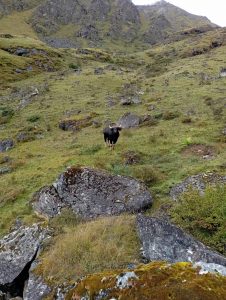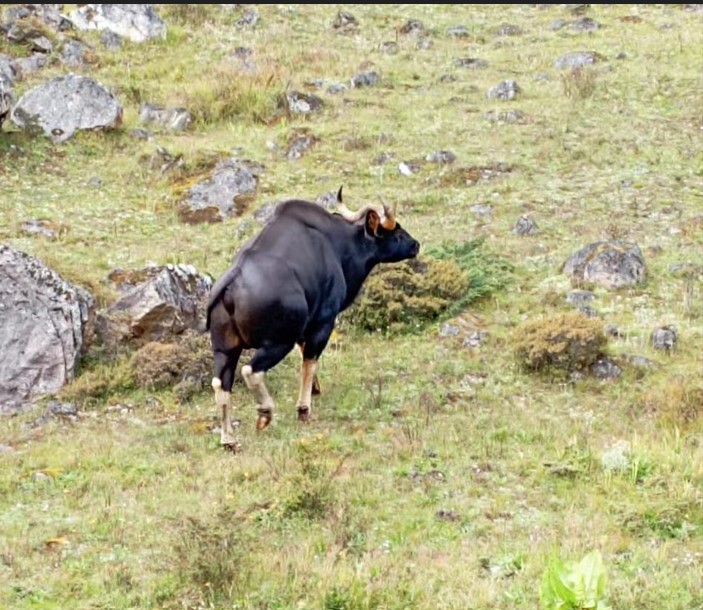 Otherwise usually known to be inhabiting the southern foothills of not more than 1500 masl, a male Gaur (Bos gaurus) was sighted at an elevation of more than 4000 masl at Drubchuthang in Tsharijathang, Laya under Gasa Dzongkhag which is under Jigme Dorji National Park (JDNP), on September 14. The gaur was earlier sighted on October 10, 2021 at Tegaythang in Naro gewog which is 4000 masl.
Otherwise usually known to be inhabiting the southern foothills of not more than 1500 masl, a male Gaur (Bos gaurus) was sighted at an elevation of more than 4000 masl at Drubchuthang in Tsharijathang, Laya under Gasa Dzongkhag which is under Jigme Dorji National Park (JDNP), on September 14. The gaur was earlier sighted on October 10, 2021 at Tegaythang in Naro gewog which is 4000 masl.
Sonam Dorji, a yak herder filmed and photographed a gaur in an open alpine meadow of Tsharijathang which is also the summer grazing ground of Takin. The gaur was found grazing by the lush green meadow, the same grazing grounds for Takins, Yaks, Horses and wild ungulates.
Usually known within the southern habitat of thickets and tall trees, the mammal was sighted in an open highland meadow, with only grasses carpeting the ground and naked mountains with no trees.
Asked about how a gaur also known as Indian bison would have climbed so high, Norbu Dorji, Laya Park Ranger, JDNP said that it may have followed the same migratory route of Takin. “There’s no way, it’d have come via Lingzhi, crossing Jarila – a high mountain pass,” he said. He suspected that it is same gaur earlier reported at Naro gewog.
It is difficult to exactly pinpoint on why a southern foothill animal would climb high up on the northern mountains. It is also not exactly known how it’d impact or come in conflict with the Takins – the national animal of Bhutan. However, Norbu Dorji is optimistic that it may not impact much since Takins are known to co-exist with other animals such as yaks, horses and wild ungulates as well.
“In Tsharijathang, we have 12 herders with almost hundred yaks and horses,” he shared and still there is not much of a problem, he added. He shared that by this time, it is almost time Takins head down to their winter habitat in lower altitude.
Known in Bhutan as Re-lang – the wild Ox, it is a bovine species native to south and southeast Asia. It has been listed as Vulnerable on IUCN Res List.
![]()


